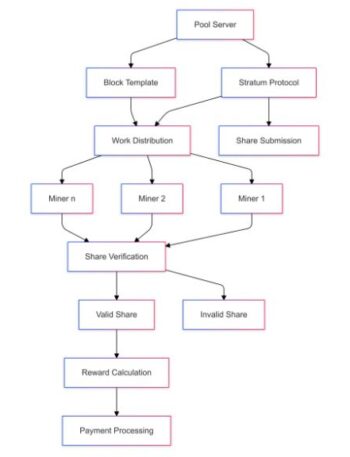Understanding Financial Markets
Definition and Role of Financial Markets
Financial markets are platforms where buyers and sellers interact to trade financial instruments such as stocks, bonds, currencies, and derivatives. These markets play a vital role in the global economy by facilitating capital formation for businesses and governments while providing investment opportunities for individuals and institutions. They help allocate resources efficiently by matching those who need capital with those who have it.
- What is NFT Finance? Market Mechanisms, Infrastructure, and Economic Impact
- Understanding the Error Term: What It Means for Your Regression Models in Finance and Investment
- Unlocking Growth: A Comprehensive Guide to the MSCI Emerging Markets Index
- What Is Big Data in Cryptocurrency
- How Credit Scores Work: A Comprehensive Guide to Understanding and Improving Your Creditworthiness
Market Participants
The participants in financial markets include individual investors, who are retail traders investing their personal funds; institutional investors, such as pension funds, mutual funds, and hedge funds; brokers, who act as intermediaries between buyers and sellers; and market makers, who provide liquidity by buying or selling securities at prevailing market prices.
Bạn đang xem: Mastering the Fundamentals of Finance and Investment: A Comprehensive Guide
Types of Market Orders
When participating in financial markets, it’s important to understand the different types of orders you can place. A market order instructs your broker to buy or sell a security at the current market price. On the other hand, a limit order specifies a particular price at which you want to buy or sell a security. For example, if you place a limit order to buy 100 shares of XYZ stock at $50 per share, your broker will execute this order only if the stock’s price falls to $50 or below.
Financial Analysis
Technical Analysis
Technical analysis involves studying historical price and volume data to identify patterns and trends that can help predict future price movements. This method relies on charts and technical indicators such as moving averages, relative strength index (RSI), and Bollinger Bands to make trading decisions. Technical analysts believe that past market data can be used to forecast future performance.
Fundamental Analysis
In contrast to technical analysis, fundamental analysis focuses on evaluating a company’s financial performance and industry outlook to determine its intrinsic value. This involves analyzing financial statements like income statements, balance sheets, and cash flow statements; assessing key metrics such as earnings per share (EPS), return on equity (ROE), and debt-to-equity ratio; and considering external factors like economic conditions and industry trends.
Trading Strategies
Day Trading
Day trading involves buying and selling securities within a single trading day to profit from short-term price fluctuations. Day traders typically close all their positions before the market closes for the day to avoid overnight risks. This strategy requires constant monitoring of market conditions and quick decision-making skills.
Swing Trading
Swing trading is another popular strategy that involves holding positions for a few days to a few weeks. Swing traders aim to capitalize on intermediate-term price movements by identifying trends that may last longer than those targeted by day traders but shorter than those sought by long-term investors.
Position Trading
Position trading involves holding positions for longer periods, typically months or years. Position traders focus on long-term investment goals rather than short-term gains. They often use fundamental analysis to identify companies with strong growth potential or stable dividend payments.
Risk Management and Portfolio Strategies
Risk Management
Risk management is essential in trading and investing because it helps minimize potential losses. One effective strategy is using stop-loss orders, which automatically sell a security when it falls below a specified price. Another approach is position sizing, where you allocate only a portion of your capital to each trade based on your risk tolerance.
Diversification
Diversification is a key risk management technique that reduces risk by spreading investments across different asset classes such as stocks, bonds, real estate, commodities, etc. By diversifying your portfolio, you can mitigate losses in one sector with gains in another.
Compounding and Dollar-Cost Averaging
Compounding refers to the process of generating earnings on earnings over time, leading to exponential growth. For instance, if you invest $1,000 at an annual interest rate of 5%, after one year you’ll have $1,050; after two years you’ll have $1,102.50 ($1,050 * 1.05).
Dollar-cost averaging is an investment strategy where you invest fixed amounts at regular intervals regardless of market fluctuations. This approach helps smooth out market volatility over time because you’re buying more units when prices are low and fewer units when prices are high.
Financial Planning and Statements
Budgeting and Finance Essentials
Budgeting forms the backbone of personal finance management. It involves tracking income versus expenses to ensure you’re living within your means while saving for future goals. Financial statements such as income statements (showing revenues minus expenses), balance sheets (listing assets minus liabilities), and cash flow statements (detailing inflows/outflows) provide critical insights into an entity’s financial health.
Business Plan Development
Creating an effective business plan starts with defining the opportunity—identifying market needs or gaps—and ends with presenting final recommendations including financial projections like revenue models or funding requirements. A well-crafted business plan helps secure funding from investors or lenders while guiding strategic decisions.
Investment Foundations
Investment Objectives and Risk Tolerance
Setting clear investment objectives is crucial because it helps align your investments with personal financial goals such as retirement savings or buying a home. Assessing risk tolerance involves understanding how much volatility you’re willing to endure in pursuit of returns—conservative investors might prefer bonds while aggressive ones might opt for stocks.
Investment Strategies
Various investment strategies exist depending on your goals:
-
Value Investing: Focuses on buying undervalued stocks based on fundamental analysis.
-
Growth Investing: Targets companies expected to grow faster than average.
-
Xem thêm : How Forward Contracts Protect Your Business: Locking in Prices and Managing Market Volatility
Dividend Investing: Emphasizes stocks offering regular dividend payments.
For example:
-
Value investors might look at companies like Coca-Cola due to its stable cash flows despite lower growth rates.
-
Growth investors might prefer tech companies like Amazon due to their high growth potential despite higher valuations.
-
Dividend investors could opt for real estate investment trusts (REITs) known for consistent dividend payouts.
Advanced Investment Concepts
Earnings Calls and Financial Statements
Earnings calls provide valuable insights into a company’s performance through discussions between management teams and analysts/investors post-earnings releases. Analyzing these transcripts along with detailed financial statements helps investors make informed decisions about whether they should invest in or divest from particular companies.
Sector Analysis
Sector analysis involves evaluating specific sectors within an economy—like technology or healthcare—to identify potential investment opportunities based on industry trends, competitive landscape analysis etc.. For instance:
-
The technology sector has seen significant growth driven by innovations in AI/ML/cloud computing etc..
-
The healthcare sector benefits from aging populations requiring more medical services/products globally..
Nguồn: https://staredecisis.quest
Danh mục: Blog





